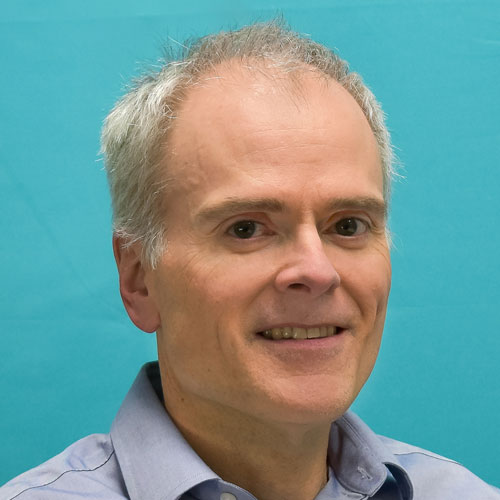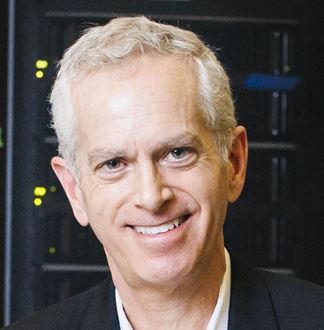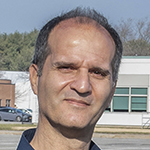AGU Honors ARM/ASR Community Members in 2020
Published: 19 January 2021
The Atmospheric Radiation Measurement (ARM) user facility and Atmospheric System Research (ASR) community is known globally for its impactful contributions to earth system research.
During its virtual 2020 fall meeting, the American Geophysical Union (AGU) held an Honors Showcase on December 9 to recognize its newest award recipients. Five members of the ARM/ASR community shared the spotlight.
New AGU Fellows
Greg McFarquhar and William D. Collins were among 62 researchers selected as 2020 AGU Fellows.
McFarquhar is the director of the Cooperative Institute for Mesoscale Meteorological Studies and a professor in the School of Meteorology at the University of Oklahoma.
Collins is the director of the Climate and Ecosystem Sciences Division at Lawrence Berkeley National Laboratory (LBNL) and a professor in residence at the University of California, Berkeley.
Both scientists entered rarefied air: AGU limits fellows to 0.1% of its membership each year.

McFarquhar has a long history working with ARM and ASR. The former chief scientist of the ARM Aerial Facility has been an ASR-funded lead scientist or co-investigator on numerous ARM campaigns.
More recently, McFarquhar was the principal investigator for the 2017–2018 Measurements of Aerosols, Radiation, and Clouds over the Southern Ocean (MARCUS) field campaign. He is a co-investigator for the TRacking Aerosol Convection interactions ExpeRiment (TRACER), scheduled to start in June 2021 in the Houston, Texas, area.
AGU recognized McFarquhar “for fundamental advances in the understanding of cloud properties and processes, leading to their improved representation in weather and climate models.”
In a video on the AGU website, McFarquhar said that many of the ideas for his campaigns and papers “have originated from discussions that have taken place at AGU.”
McFarquhar also co-chairs the ASR High-Latitude Processes Working Group and is on the ARM-ASR Coordination Team, which fosters communication between ARM and ASR.
Learn more about McFarquhar’s career.

Collins is a co-investigator for ARM’s 2021–2023 Surface Atmosphere Integrated Field Laboratory (SAIL) field campaign in Colorado. He is also the founding director of the Environmental Resilience Accelerator, a UC Berkeley-LBNL initiative that focuses on solving challenges posed by environmental change.
The AGU Fellow citation for Collins noted his “pioneering contributions to the fundamental understanding of atmospheric radiation, radiative forcing, and the role of radiation in climate.”
In 2015, Collins received a U.S. Department of Energy (DOE) Secretarial Honor Award as chief scientist of the Accelerated Climate Modeling for Energy (ACME) project. From 2003 to 2005, he chaired the DOE/National Science Foundation Community Climate System Model Scientific Steering Committee.
“I very much look forward to continuing to tackle the critical issues around climate change with all the AGU membership in years to come,” said Collins in his acceptance video.
Researchers Receive Midcareer Honors
ARM/ASR veteran Pavlos Kollias and recent ASR co-investigator Tristan L’Ecuyer were among five recipients of the 2020 AGU Atmospheric Sciences Ascent Awards, honoring their influential research and scientific leadership.
The Ascent awards, given by AGU’s Atmospheric Sciences section, are presented annually to scientists eight to 20 years removed from receiving their PhDs.

Kollias, a remote-sensing expert and former ARM associate chief scientist, has a joint appointment at Brookhaven National Laboratory and Stony Brook University in New York.
L’Ecuyer is a professor of atmospheric and oceanic sciences and the director of the Cooperative Institute for Meteorological Satellite Studies at the University of Wisconsin, Madison.
The two presented December 9 during the Frontiers of Atmospheric Science I session, highlighting the work of 2020 Ascent (midcareer) and James R. Holton Award (early career) recipients.
Kollias, an ASR-funded researcher, described a new framework in which active remote sensors, such as radars, are driven by satellite, camera, and other non-radar observations to track atmospheric phenomena in real time with unprecedented resolution.
“Doing that,” said Kollias of applying the Multisensor Agile Adaptive Sampling framework, “we were able to track for the first time the life cycle of convective clouds using a dynamic data-driven sampling framework that is expandable and can change the way we sample clouds, convection, and precipitation.”
Get more information about Kollias and his work in this release from Brookhaven National Laboratory.

L’Ecuyer shared what active sensors in space, such as NASA’s CloudSat satellite, have taught researchers about Earth’s energy balance. He said that mixed-phase clouds make up less than 8% of total global cloud cover but account for 20% of the net global cloud radiative effect at both the top of the atmosphere and the surface.
“We’ve also been able to show that clouds enhance Greenland ice sheet melt by up to 50 gigatons per year, and about half of that melt comes from supercooled water contained in mixed-phase clouds,” said L’Ecuyer.
From 2016 to 2018, L’Ecuyer was a co-investigator on an ASR project to develop and evaluate a data product for cold cloud and precipitation process analyses using observations from ARM’s Alaska sites.
Learn more about L’Ecuyer and his award in this release from the University of Wisconsin’s Space Science and Engineering Center.
A Lecturer Honor

L. Ruby Leung, the chief scientist of DOE’s Energy Exascale Earth System Model (E3SM) project, gave the Jacob Bjerknes Lecture on December 7.
Named for a prominent weather researcher, the Bjerknes Lecture is given annually to a scientist who has done impactful work to advance the understanding of the atmosphere and Earth’s climate.
Leung, an atmospheric scientist at Pacific Northwest National Laboratory in Washington state, was the principal investigator for the 2015 ARM Cloud Aerosol Precipitation Experiment (ACAPEX). She is also on the core science team for the SAIL campaign.
Leung is a fellow of AGU, the American Meteorological Society, and the American Association for the Advancement of Science.
During her lecture, Leung discussed the use of the atmospheric energetic framework to understand regional precipitation changes and the importance of understanding and modeling convection in advancing that framework.
Nominate Your Peers
AGU section award nominations for 2021 are open now, as are nominations for union honors.
The 2021 AGU Fall Meeting is scheduled for December 13–17 in New Orleans, Louisiana.
Keep up with the Atmospheric Observer
Updates on ARM news, events, and opportunities delivered to your inbox
ARM User Profile
ARM welcomes users from all institutions and nations. A free ARM user account is needed to access ARM data.


















